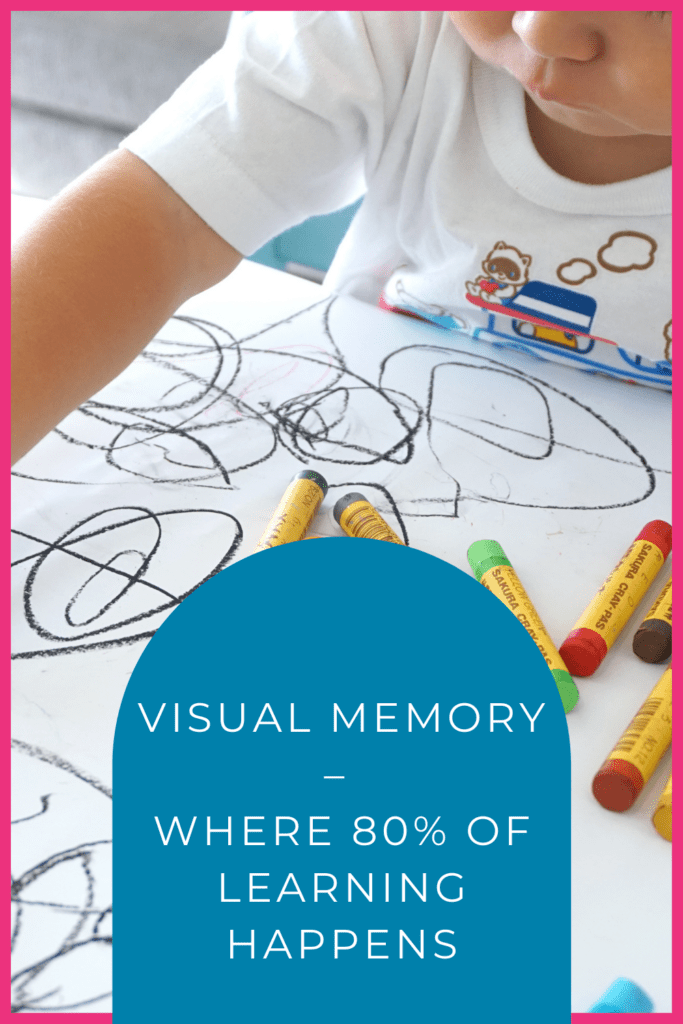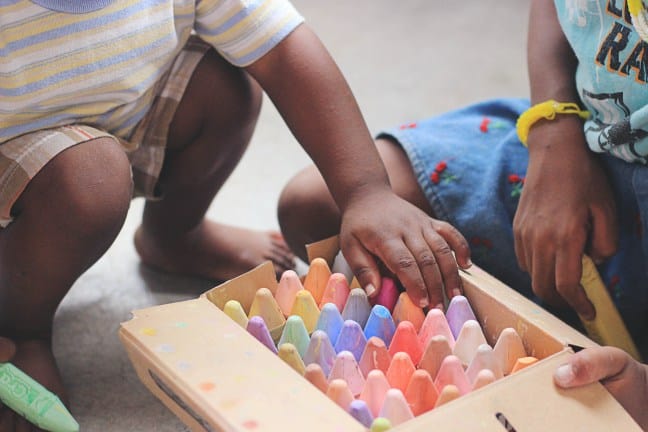Developing visual memory is key to improving reading and learning ability since 80% of learning occurs through the visual system. Visual memory is a crucial component to your child’s ability to read and effectively learn. It has actually been found to exceed auditory memory; in fact three quarters of learning both in and outside of school occurs through the visual system.
It doesn’t take research to convince most adults of this. Anyone who has to sit through a sixty minute conference that involves strictly listening to someone speak not only will recall very little of what was said, but will more likely become inattentive and lose interest. The saying a picture is worth a thousand words certainly rings true on a scientific level when we are talking about visual memory, learning and reading.
So what is visual memory and how does it impact reading and learning ability? Visual memory is the ability to create a mental image of an object, place or form in the mind’s eye. Recalling the appearance of an object, place or image for later use should be automatic.
Visual memory enables your child to see printed letters and words and to decode them visually. Reading requires your child to assemble words and phrases into a visual image and once this occurs through the mind’s eye–your child recognizes words, creates meaning and reading comprehension occurs naturally.
When children need to read aloud in order to better understand a text or story this is a cue that they need to rely on their auditory memory because their visual memory is weak. Skipping letters when spelling, or not recalling a word they just read on a previous page are also possible indications. A child with a strong visual memory can recall a new word after only a few exposures.
While some children have excellent long term memory, if your child has a poor visual memory, they will be more likely to have difficulty with integrating information from their working memory into their long term memory.
Visual sequential memory is also an important part of visual working memory because it involves being able to recall items or objects in their correct sequence. Frequent spelling errors, remembering phone numbers, or any correct sequences are affected if there is a deficit.
Common Signs of a Weak Visual Memory are:
- Remembering phone numbers
- Reading comprehension
- Poor spelling
- Difficulty using a calculator or keyboard because a weak visual memory makes it harder to remember where the correct keys are located.
- Correctly recognizing numbers or letters in the early years
- Does not remember sight words from one page to the next
- Doing poorly on tests despite studying
- Needing to re-read a sentence several times to comprehend the meaning
- Reversals—may recall the name connected to a letter but not the correct direction
- When copying work form the board–often can’t remember what they just saw
Developing visual memory is key to improving reading comprehension and learning ability. This can easily be done with some simple games and activities at home. Children and people in general have a less developed working memory today than most of our grand-parents because of our over-reliance on technology and other inventions that no longer require us to rely on our memory as much.
Decreasing time on technology is always a good place to start and it also helps to improve attention levels and memory abilities. Based on how much your child’s visual memory is developed, adjust the level of challenge in terms of how many details, items and how much time they have to recall using their visual memory.
Below are different activities you can do at home to help develop visual memory.
1) Observe & Recall – Have your child study a photograph, a detailed object or room. Give them a few moments and then ask them to close their eyes and to describe it back to you.
2) Instagram – If your child is older and you are trying to get them to buy into this activity, allowing them to use Instagram to take pictures, to study them for a few moments and then test their recall is another great option.
3) Have your child read a short amount of text in their head and then ask them to close their eyes and tell you what the text or story was about.
4) Show them a photo or object for a few moments and then have them draw it in as much detail as possible. Once they are better at this, ask them to do the same activity except they have to describe it verbally instead of drawing it.
5) Word jumbles are another great way to improve visual memory and visual processing.
6) Card games that involve matching and memory (Crazy Eights, Memory, Bingo, Pairs, Snaps, Unos, Go Fish)
7) Games like ‘I Spy’ as well as ‘What’s Missing?’ Play ‘What’s Missing’ by placing several items on a tray. Have your child look at the tray for a few moments to ‘remember’ what is on it. Then hide what’s on the tray and ask them to tell you what was on it. To make it more challenging decrease the amount of time they have to ‘remember’ what’s on the tray, add more items or arrange them in sequence and have them repeat back what they say in the same sequence.
You can also have them remember what’s on the tray and then have them close their eyes and remove one item and tell you what item is missing. You can increase this challenge by removing more than one object.
These types of games improve visual memory as well as teach them ‘tricks’ to remember more efficiently and quickly. This game can also be played with a room of people, by having one person leave and making the person guess who is missing.
8) Visualization or meditation CD’s – Mindfulness has become immensely popular in mainstream culture as well as in schools because it has been shown to not only reduce stress levels but to increase attention and focus as well as processing and memory. Visualization exercises can be equally helpful with stress and can help to make serious gains with visual memory. You can buy these online and there is also a ton of free visualization activities for children on YouTube.
Other ways to teach your child to improve their memorization skills is to make it multi-sensory. Multi-sensory activities helps the brain to better integrate information. Any kind of movement when learning will only improve processing and retention.
Simple ways to incorporate this into studying is to toss a beanbag or ball back and forth while repeating the information, or quizzing your child. Another option is to have them sit down when you say a statement that is false and stand up when you say a statement that is true. Teaching your child to make associations with something related or something they already know has been shown to significantly increase retention.
To learn more about how you can help your child succeed and feel more confident, contact me to learn more about programs that help your child build a better brain.



One thought on “Visual Memory – Where 80% of Learning Happens”
Visual memory is the strongest memory of learning mechanism. The visual cortex of brain is highly developed to interpret imaging and learning. Knowledge transfer may be fast in proper visualization. Thank you.